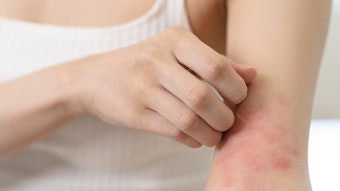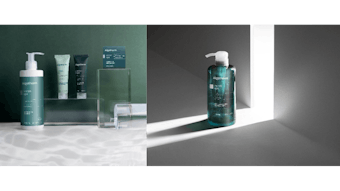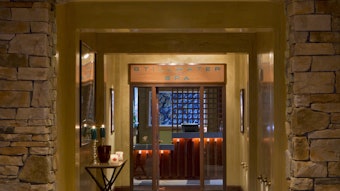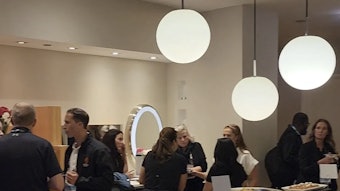The simple mention of China is enough to get any businessperson agitated and excited. China has one of the fastest-growing economies in the world and offers a large number of consumers ready to buy any number of a variety of goods. In addition, a significant portion of the world’s products are made in China. All this points to one thing—the Asian country appears to be the next economic superpower. However, just hearing about this economic wonder is sometimes not enough. I decided to go see for myself what is really happening in this country.
The numbers
There is much to be said about the attractiveness of the Chinese market for spas and cosmetics. In 2006, the sales of cosmetics and toiletries in China reached approximately $7.5 billion. According to a national government research project, spending on beauty products and services has been increasing at an annual average of 15–20% during the last five years, and the growth rate is expected to increase to 25%. Foreign brands can make up as much as 90% of total national cosmetic and toiletry sales.1
In terms of spas, research indicates there are a multitude of luxury spas, mostly in hotels, and hundreds of independent massage and beauty parlors. Linda Au, director of sales and marketing for Spa Resources Asia Ltd., a trade and consulting organization, estimates there are currently about 40 brand name spas in China in more than 75 outlets, up from about 25 brand name spas in 2003. Today, 32% of them are in Beijing and 36% are in Shanghai, with 70% of them being located in hotels. From 2001–2002, there were approximately one million spa visits in China and Hong Kong.
Current figures were not available, but Au conservatively estimates an annual 10–20% growth in clientele for the past few years, with similar increases expected in the future. According to Intelligent Spa’s 2002 Spa Industry Survey Program, 41% of the spa visits were from international tourists, with the rest being from Chinese and foreign residents. While local expatriates and tourists represent the majority of spa clients at name brand spas, Au also predicts the local/foreigner share of the market will shift to a 50–50 ratio in the next few years.2
Seeking out Shanghai spas
Wanting to get a more insider look at what’s behind these numbers, I traveled around Shanghai, visiting various spas. While a range of services and products are offered, there are definite distinctions in style and operation.
Decléor Spa. I arrived at the Decléor Health and Beauty Spa, a place said to be popular with the locals, and immediately was awed by the size. There are nine Decléor locations in Shanghai, and my first impression of this one was that it was a truly institutional operation. Prices were higher than expected, with an average
115-minute facial costing more than $150.
I was asked to take a seat in a consultation booth and offered a hardcover, 20-page bound treatment menu describing a wide variety of facial and body treatment options. Without booking a service I wasn’t allowed to visit the spa, but was assured of its grandeur and beauty. The receptionist who offered descriptions of the various treatments in broken English was so hospitable and friendly that I left with a bottle of facial oil, hoping she worked on commission.
Dragonfly. The next stop was Dragonfly, a local spa chain said to be preferred by Shanghai’s burgeoning nouveau riche population that still tends to shy away from the higher-priced hotel spas. The spa was small, but well-decorated and welcoming. I was offered tea and another hardcover, bound treatment menu. Here, the prices were surprisingly low—a 30-minute head-and-shoulder massage cost less than $10, and I couldn’t resist.
I was led to a dark room with several lounge chairs positioned side by side where I had a wonderful head, shoulder and arm massage. A first for me, I remained clothed, and no products, apart from hand sanitizing gel, were used during the treatment. My therapist nodded disapprovingly as she massaged my neck, saying, “Here no good,” which I translated as “Too many knots.” Her expert hands combined with the soothing music, darkness of the room, and waterfall sounds helped me to relax, and I left refreshed and convinced I had gotten a true bargain.
Banyan Tree Westin. I learned here that oftentimes the hotel in which a spa is located is not necessarily the spa’s operator. Rather, many Chinese hotels outsource their spas’ operations to spa management companies. At the Westin, the spa is operated by the Singapore-based Banyan Tree, and, in addition to having the spa in the Westin, the company is planning to open a resort in the northwest part of the country’s Yunnan province.
While I didn’t benefit from a treatment here, the overall feel was corporate, dark and heavy. When I asked to visit the spa, I was rapidly escorted in and out of one of the couples’ rooms, then was asked to leave when I said I wasn’t planning on booking a service.
Evian Spa. Next up was the Evian Spa, a ladies-only contemporary spa. One of the most beautiful facilities I have had the pleasure of visiting anywhere, Evian Spa is housed in a building nicknamed Three on the Bund, a 10,000-square-meter historic structure built in 1916 that recently was renovated by American architect and designer Michael Graves. The building features two striking atria and a grand stairway of alabaster. The spa lobby—a sleek, modern, calm space decorated with glass, white marble and polished stone—conveys cool serenity and encourages guests to instinctively lower their voice and slow down.
Intending to merely ask for a spa tour, the hot stone pedicure proved irresistibleand turned out to be one of the best pedicures I have ever experienced. The esthetician spent 90 minutes on my toes and massaged my legs with hot stones in such a relaxing fashion that I fell asleep, not waking up until I was nudged discreetly after the polish application.
Mandara Spa JW Marriott. Finally, I could not leave Shanghai without visiting the Mandara Spa at the JW Marriott, which was welcoming and staffed by a friendly, professional team. Similar to the format at the Westin, the hotel is not the spa operator. As the name indicates, the spa is managed by Bangkok-based Mandara. The company, which currently has facilities in Shanghai and on Hainan Island, has signed two contracts to open a third spa in Beijing at the end of this year and a fourth spa in Shanghai in the middle of next year. Mandara’s plan is to target all major cities in China with multiple locations, particularly Beijing and Shanghai.
Here I booked the signature treatment, a “four-hand massage.” The treatment rooms are really treatment suites—large, with a separate shower room and dressing room. Flower petals on the floor welcomed me to the massage table, and I spent the next 90 minutes trying to figure out which two hands belonged to the same set,
a fascinating experience. The therapists, two petite Asian women, were in complete synchronization and exerted similar pressure, making this massage truly wonderful. After my treatment, I chatted with the spa’s manager, Samart Eh Chuei, who confirmed this massage was the spa’s most requested treatment.
Sephora in Shanghai
Turning to a different perspective of the beauty industry in China, I also checked out several Sephoras located throughout the city, looking to learn about the connection between spas and the skin care market as a whole in China.
Sephora entered China in early 2005 and already has 19 stores in seven cities, including eight in Shanghai. The company’s decision to re-enter Asia was fraught with mixed expectations after its failed experience in Japan in the late 1990s. The risk appears to have paid off though. By 2009, Sephora expects to have approximately 100 stores throughout China, and future plans include returning to Japan, as well as opening stores in Hong Kong, Macau, Taiwan and Singapore.
A typical Sephora store in China generates about half of its revenues from skin care, which is slightly lower than the market average, and about a quarter from makeup, which is slightly higher than the market average. Most of the established brands are present, complemented by smaller, newer lines that are some of Sephora’s more recent launches. A few Asian brands also are present, including Herborist, a Chinese skin care line; Laneige, a Korean brand owned by Amore Pacific; and Kose, a line from Japan. Not surprisingly, the majority of skin care products focus on whitening.
I visited four stores, all with a different personality. Sephora’s very first store, on Huai Hai Zhong Road, is small and intimate, and headed by a lovely manager named Jenny. She pointed out the young men in the store trying out various fragrances as an indication of the growing interest in this typically non-Chinese product.
In Pudong, the Sephora store is in the Super Brand Mall and has a large tourist client base. Jia Yi, the assistant manager, explained she recently graduated from SOS, the School of Sephora, a requirement for all Sephora store employees, and showed me the Beauty Bar, where customers can enjoy mini services, benefit from demonstrations, and receive personalized skin care advice.
The Sephora Xujiahui exemplifies the company’s fast growth strategy by partnering with independent, lower-end department stores. These department stores, of which there are hundreds, stop carrying beauty products altogether and turn over a part of their space to Sephora, who brings in higher-end lines and a new clientele. Sephora’s only requirement is to have a separate entrance and street-level visibility.
Finally, at the Sephora Gubei, located within the large Carrefour shopping center, the clientele is much more residential. Store employee Elise explained that, though there are less people in this store, the average ticket is higher because the women have more time and money to spend there.
The next frontier?
A few days, five spas, and four Sephoras later, I began my 25-hour journey back to Washington, D.C. I had timed my trip intending it to coincide with the International SPA Association’s (ISPA) Asia show from which ISPA withdrew its support two days before the opening because of the low attendance—25 pre-registered—and low exhibitor turnout—about 30 exhibitors. While this was thoroughly disappointing, the experience demonstrated two crucial lessons. First, everyone makes mistakes, and what matters is how these mistakes are handled. The ISPA management team and, in particular, ISPA Chairman Jim Root deserve credit for taking the blame, being accountable, apologizing profusely and making it up to those who attended by offering pre-registered attendees with things such as a complimentary pass to the association’s fall Florida conference, as well as with a free ISPA Asia research report.
Second, the Chinese market is more complex, unpredictable, unmanageable from afar, and overall more demanding than many likely expected. It is true the Chinese economy is promising, but my sense coming home is that the Chinese market for cosmetics and spas is as challenging as it is interesting, and as expensive to enter as it is potentially lucrative.
REFERENCES
1. Cosmetics Industry in Shanghai report from the
U.S. Commercial Service (Xinhua News Report,
www.cosmoprofshanghai.com, Xinhua Economic
News Service)
2. As quoted on the ISPA China Web site










